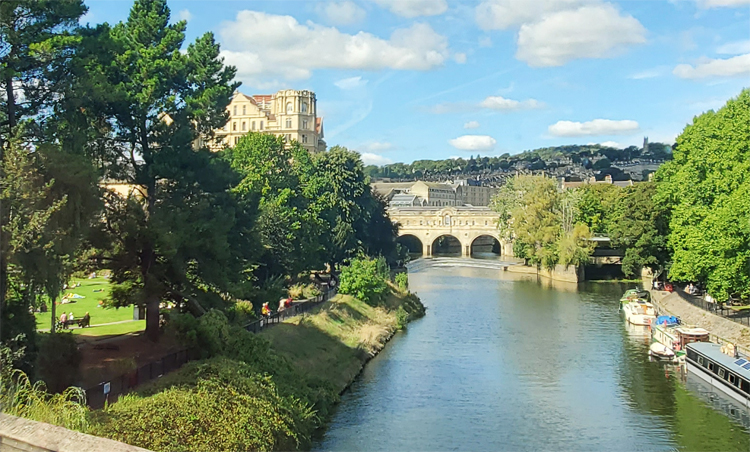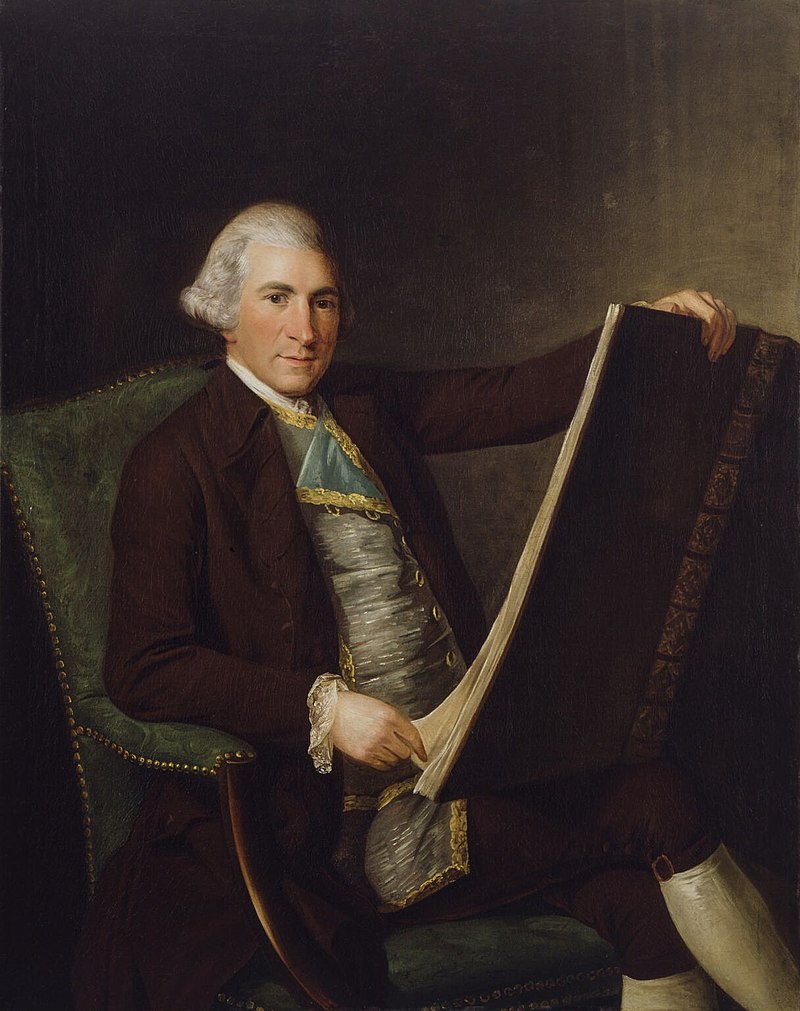by Theodore Dalrymple (April 2023)

Pulteney Bridge by Robert Adam, Bath, England, Kendra Mallock
I suppose I should declare an interest at the outset: I will mention favourably a book by one of the editors of a magazine for which I write, the New Criterion.
Let me reassure smellers-out of financial corruption, however, that the sums of money that could possibly be involved are so tiny that no one would risk his reputation for them, however dishonest he was. My principle is clear: I will mention a book by a person I know if it is good and I can praise it in the knowledge that I would have written the same thing had I not known its author. On the other hand, I admit to refraining from adverse criticism of the books of people with whom I am friendly. About those books, I remain silent; I leave criticism to others.
Sometimes I rather regret than no one, except once, has tried to bribe me. This is a testimony to my profound unimportance: it means that what I say or do makes no difference to anyone. The one exception was many years ago when a family asked me, as a young doctor, whether I could do away with their relative, who they felt was suffering pointlessly (or holding up the inheritance due them). I said that this was a treatment that was not available on the National Health Service.
‘Can’t we go private, then?’ they asked.
But back to the book. Its title is The Bridges of Robert Adam: A Fanciful and Picturesque Tour, by Benjamin Riley. It is a beautifully-illustrated but also scholarly consideration of a little-studied aspect of the great architect’s work, his bridges. It is sumptuously illustrated, indeed so beautifully that after looking at it for any length of time one feels a certain pain on looking up and seeing the ugliness by which one is habitually surrounded.
 Robert Adam was a brilliant architect but not what one would nowadays call a starchitect. To be a starchitect one must above all be an egotist, and while Adam was not averse to publicity, he did not build in order that everyone might look and immediately say ‘Robert Adam,’ as everyone from now on will look at Arles and immediately say ‘Frank Gehry’ (it won’t in the end be a compliment, either, but for a certain mentality is better to be despised or hated than entirely forgotten). Adam, as this book makes clear, always considered the environment, both natural and man-made, in which his buildings and, in this case his bridges, would be erected. Harmony, not dissonance, was what he was after. With starchitects, it is precisely the reverse. They do not wish to hide their light under a bushel; they would rather the bushel were destroyed than that their light was not noticed.
Robert Adam was a brilliant architect but not what one would nowadays call a starchitect. To be a starchitect one must above all be an egotist, and while Adam was not averse to publicity, he did not build in order that everyone might look and immediately say ‘Robert Adam,’ as everyone from now on will look at Arles and immediately say ‘Frank Gehry’ (it won’t in the end be a compliment, either, but for a certain mentality is better to be despised or hated than entirely forgotten). Adam, as this book makes clear, always considered the environment, both natural and man-made, in which his buildings and, in this case his bridges, would be erected. Harmony, not dissonance, was what he was after. With starchitects, it is precisely the reverse. They do not wish to hide their light under a bushel; they would rather the bushel were destroyed than that their light was not noticed.
Adam was clearly a very talented man, perhaps even a genius. Among other things he could paint and draw, the latter an acquirement no longer necessary, or at any rate valued, for architects, who rely on computers to do their draughtsmanship for them. It is hardly surprising that what is not drawn with toil is rarely constructed with care, and it is probably many years since a large building has been constructed for which anyone will ever feel affection.
As I read the book, I pondered the question, impossible to answer but not therefore without point (contrary to what the logical positivists might have said), of what Robert Adam would have done if he had been born in our time rather than in the time in which he was born. After all, if Mozart were born today, he would not compose what we now know as Mozart. The man needs the time, but the time needs the man.

In this sense, Adam was fortunate in the time into which he was born. It was an aristocratic age. No one then questioned the value of beauty and elegance in architecture, but I suspect that few people now—educated people, that is—would look, as Mr Riley has looked, at Adam’s bridges and perceived not the elegance and beauty, but the social injustice of the time in which they were constructed and which even made them possible: for of course Robert Adam built for immensely rich patrons while the great majority of the population was poor. When he was active, the population of London, for example, could only maintain itself, let alone increase, by means of immigration from the countryside into it. By the age of five, half of London’s children were dead.
It would be all too easy to enumerate the horrors of the age: the overcrowding, the poverty, the repeated epidemics, the pox, the monotonous and insufficient diet, the crime, the gin, the filth, the smells, the absence of sanitation and clean water, the terrible accidents, the grinding work, the fleas and lice, the public executions, the non-existence of analgesics, and so forth. Typhus—gaol fever—stalked both gaols and the courts, and even the judges could die of it.
It was no golden age of comfort, then, and while it is possible that people took for granted the expected inconveniences of the time, and therefore did not mind them as much as should we if they were visited upon us who are used to a quite different level of comfort, it is difficult to believe that the most terrible suffering was not commonplace, from which the rich were somewhat but not wholly protected. After all, there were no real treatments for any disease, and surgery was rudimentary, brutal and dangerous.
And yet, despite everything, it was also an age of elegance, as Robert Adam’s architecture attests, and many artifacts such as silverware also attest. Good taste and great poverty went hand in hand, as if they were almost dependent upon one another. Moreover, Robert Adam built at a time when any ordinary jobbing builder could build something more pleasing on the eye than the vast majority of trained architects could manage today, probably because they were content to use pattern books and did not think of themselves as artists. There does seem to be a tide in the affairs of men, etc.
Our age is one of great personal comfort, at least by comparison with all previous ages, and I do not wish to decry such comfort. I am not a great mortifier of my own flesh in any cause whatever, though in my time I have endured a certain amount of discomfort voluntarily, for example by crossing Africa by public transport. But no one will ever call our age one of elegance, I think, rather the reverse. Even those who can afford the utmost elegance refuse it. Young billionaires dress like paupers and do their best to look shabby, at least in public. The best that very rich people can do is inhabit the houses of the past, provided that they do not inflict too much damage on them: as architectural patrons, they are usually complete failures, no matter how much money they spend. King Farouk was Bernard Berenson compared with them.
Nor are public buildings, or public monuments, any better. The loss of taste is not immemorial: one has only to compare the memorials to Jefferson and Lincoln in Washington with that to Eisenhower to realise this. All sense of grandeur has been lost; the Eisenhower memorial would disgrace the memory of a much-loved mayor of a small provincial town. Indeed, it is so bad that from a distance it does not even look as if it could be a memorial, though it is also difficult to imagine what it could be instead.
(Incidentally, something similar to the starchitect syndrome afflicts the world of theatre and opera. Shakespeare and Mozart have become opportunities for directors to display their genius, as the ancient city of Arles was for Gehry to display his.)
I have no complete or watertight explanation of the collapse of taste (except in cuisine), even among the rich. I suspect that it has to some connection with a certain kind of egalitarianism. Needless to say, the very rich are not egalitarians, at least not in their economic lives. In the aristocratic culture in which Robert Adam lived, there was a profound sense of hierarchy as being the normal, inevitable and laudable state of things. His patrons were quite unabashed about their position in society, and while no doubt there were many who saw that position as unjust, since it owed nothing to the efforts or virtues of those who held it, there were even more in the population who at least acquiesced with the social arrangements as being natural. The aristocrat did not have to apologise for his sumptuary spending on such things as elegant bridges on the approach to his castle or country house. It was what was expected and what came naturally to him.
We tend to excoriate other ages as having been less honest than our own, but dishonesty and hypocrisy spring eternal, probably more so than hope ever did. Our very informality of dress (and address) is, it seems to me, an implicit lie, given the great, and I would say largely inevitable, inequalities in our societies. The billionaire in a T-shirt is Marie Antoinette playing shepherdess, and I suspect that he hopes thereby to escape her fate, which he subliminally suspects might one day be his own.
Lack of elegance to the point of ugliness has its own virtues: that is to say, its political virtues, which these days are the only virtues that count. Ugliness is democratic, or at least demotic, because it is so easy to achieve and is within the reach of everyone. Indeed, in a universe in which the second law of thermodynamics reigns, the slide to ugliness is the natural tendency of things, while beauty demands constant maintenance and a perpetual struggle against dissolution. Moreover, ugliness is cheap, but beauty tends to be expensive, or at least time-consuming.
While ugliness can be universalised, beauty cannot: therefore, beauty is inherently unjust. This, I think explains why in England, where inequality that is made manifest has become taboo, almost every beautiful town or even village has been ruined aesthetically by the strategic placement of a modern eyesore. Why should anyone be able to live in beauty of not everyone can? Better that there should be no beauty than that it should be unequally distributed.
I think this levelling tendency is also pleasing to many architects, who are thereby absolved from the necessity to create beauty themselves. Any fool can ruin a Regency terrace, for example; to copy it exactly would inflict a psychological wound on the architect who secretly knows that he can do no better; while actually to construct something new that is an adornment to the terrace would take real talent and ability, which almost by definition the products of our architectural schools do not have, or have drummed out of them by forced adherence to the dreadful tenets of such as Le Corbusier and Mies van de Rohe.
Self-uglification—for example, by means of tattooing, body piercing and the sloppiest mode of dressing—has become a sign of virtue. As far as dressing sloppily is concerned, it is also an implicit sign that the person is above concern with the world of mere appearance. In fact, of course, it is a sign of complete egotism, insofar as the sloppy dresser is implicitly saying, ‘I am not going to make an effort just to please you, who must accept me as I am, at my true infinite worth.’ The sloppy dresser demands that we should see him as a person as such, in the Kantian sense, and not merely the appearance of a person. A secondary advantage of all this is that it requires no effort, and that it allows us to get on with the true business of life, which is that of distracting ourselves.
As with a bad smell, we soon reach the stage with ugliness that we do not even notice it. I think that we have reached that stage. Young people are not even aware that the world has ever been, or could ever have been, aesthetically different. I would give them The Bridges of Robert Adam to read.
Table of Contents
Theodore Dalrymple’s latest books are Neither Trumpets nor Violins (with Kenneth Francis and Samuel Hux) and Ramses: A Memoir from New English Review Press.
Follow NER on Twitter @NERIconoclast
- Like
- Digg
- Del
- Tumblr
- VKontakte
- Buffer
- Love This
- Odnoklassniki
- Meneame
- Blogger
- Amazon
- Yahoo Mail
- Gmail
- AOL
- Newsvine
- HackerNews
- Evernote
- MySpace
- Mail.ru
- Viadeo
- Line
- Comments
- Yummly
- SMS
- Viber
- Telegram
- Subscribe
- Skype
- Facebook Messenger
- Kakao
- LiveJournal
- Yammer
- Edgar
- Fintel
- Mix
- Instapaper
- Copy Link









